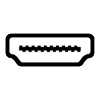1
Not Working ProductsChargers and Power Banks
Headphone & Speakers
Cases & Covers
Virtual Reality
Cables & Adapters
Media Player
Laptop
Tablet
Desktop
Cell Phone
Printers & Copiers
Memory Cards
TV
Computer Display
Game Console
Smart Home
Wearable Technology
Photo & Video Camera
Car Electronics
Car
Networking Equipment
Smart Toys
Home Audio & Video
Professional & Industrial
Storage Drive
Docking Station
Game Console Controllers
Set-top box
Keyboard, Mice, & Stylus
Portable Music Player
Computer Parts & Components
Cordless & Speakerphones
Projector
Software
Reporting
ASUS C201 11.6 Inch Chromebook (Rockchip, 4 GB, 16GB SSD, Pearl White/Light Blue)
by ASUS




Interested in this product?

Select a product category to see which devices type we recommend to use with the ASUS C201 11.6 Inch Chromebook (Rockchip, 4 GB, 16GB SSD, Pearl White/Light Blue):

SanDisk Connect Wireless Stick Works Ok with Asus Chromebook But Not so Practical
We observed that it was easy to use SanDisk's Connect Wireless Stick with this review for the Phone 6S and this review with the Galaxy S7. Next, we wondered how easy it would be to transfer files from computers such as the Asus C201 Chromebook.
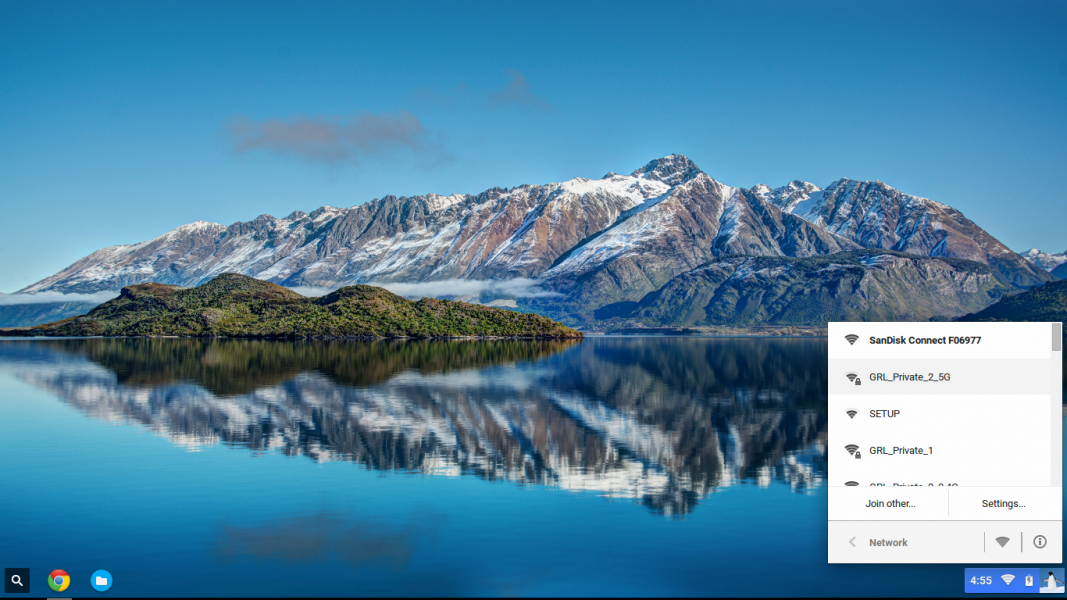
First, we had to turn on the SanDisk Connect's built in network and connect to it in order to access the files within the drive. We found that the Chromebook refused to connect unless the wireless stick was practically on top of the laptop itself, which greatly decreases the potential advantages of having a wireless storage device. The signal had to be at above 90% strength, as reported by the Chromebook. After connecting, however, the stick could be taken further away.
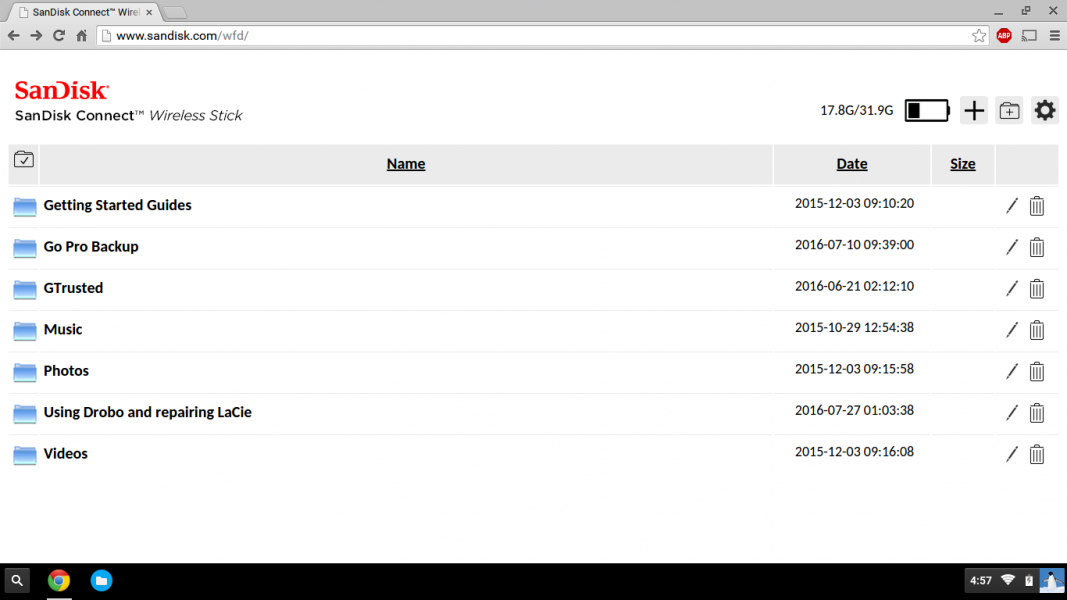
Going to http://sandisk.com/wfd/ brought us to the above page, an in-browser interface for the file system within the wireless stick. We could see how much space we've taken up, compared to the total space, as well as create upload new files with the "+" icon and create new folders. The battery is also indicated, though it is only segmented into three bars, minimizing the quality of information it conveys.
Most noticeably, we were able to access all of this information without any form of security check, which some may find alarming.
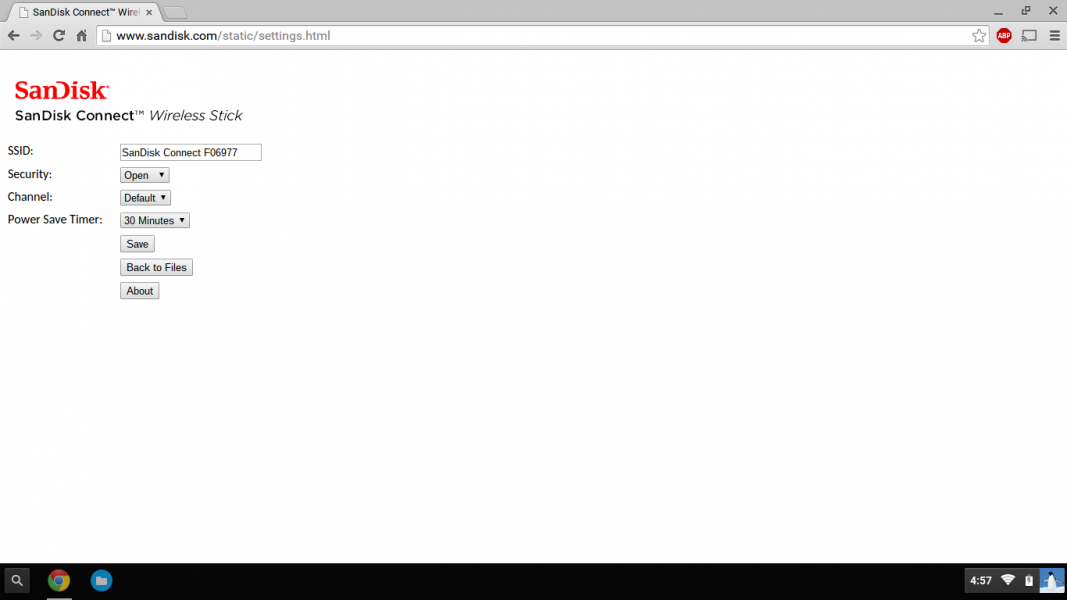
Fortunately, going to settings allows for a change in security from Open to WPA2, setting a password for the network. We could also change the network name if we so desired.
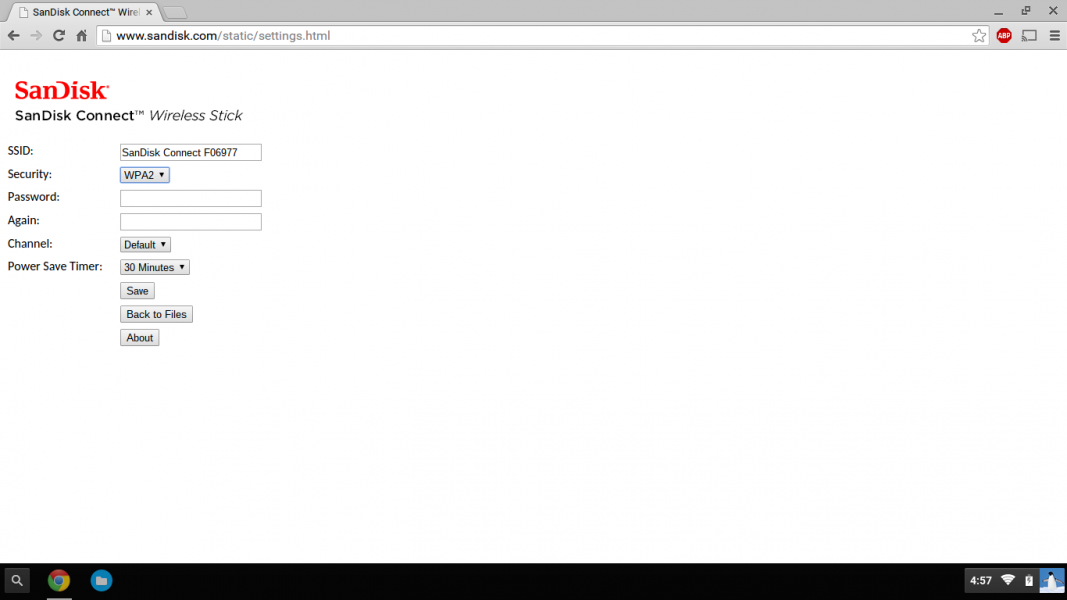
Venturing into one of the folders with the hopes of experiencing how well the stick transfers files, we came across a 10 Mb video file.
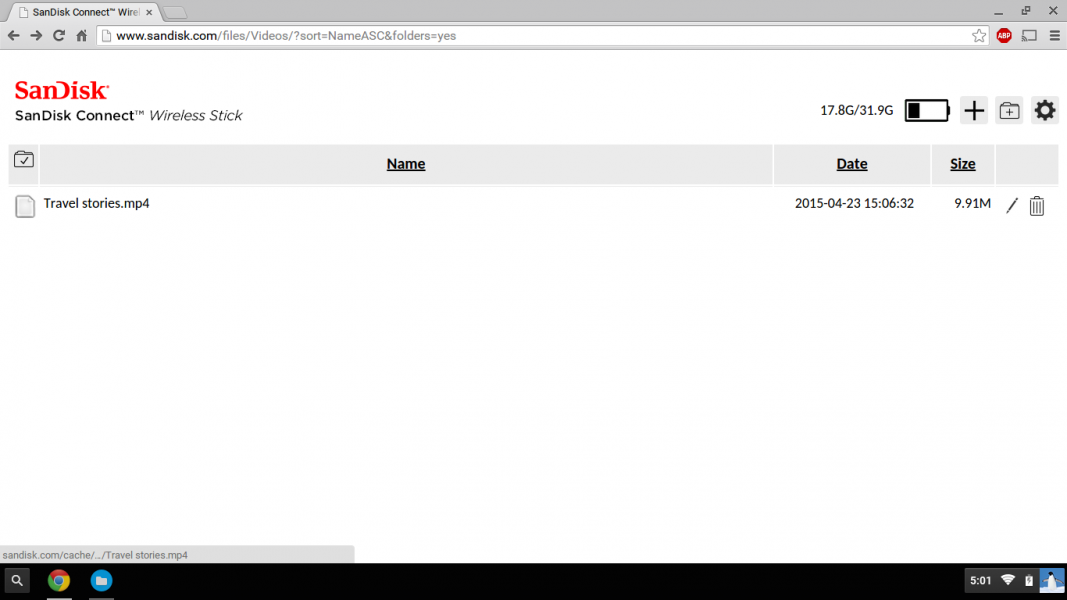
Right clicking and selecting "Save Link As" brings us to the following page.
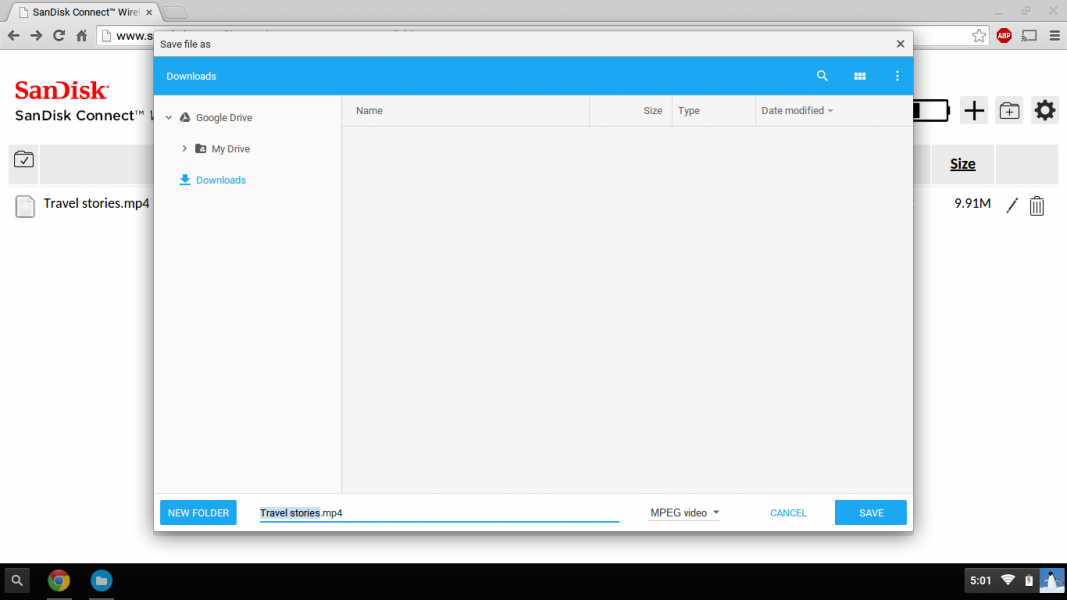
Keeping the flash drive within a roughly ten foot radius was conducive to decent transfer speeds, as placing the stick further away brought the download speed down significantly, nearly to a grinding halt. For reference, the network strength indicated by the Chromebook was about 70% at the boundary.

The above photo shows the newly acquired MP4 file.
During our tests to find the sweet spot beyond which the speed of downloading fell, we transferred many files from the stick onto the Chromebook. Now to test upload speeds, we transfer one back to the disk.
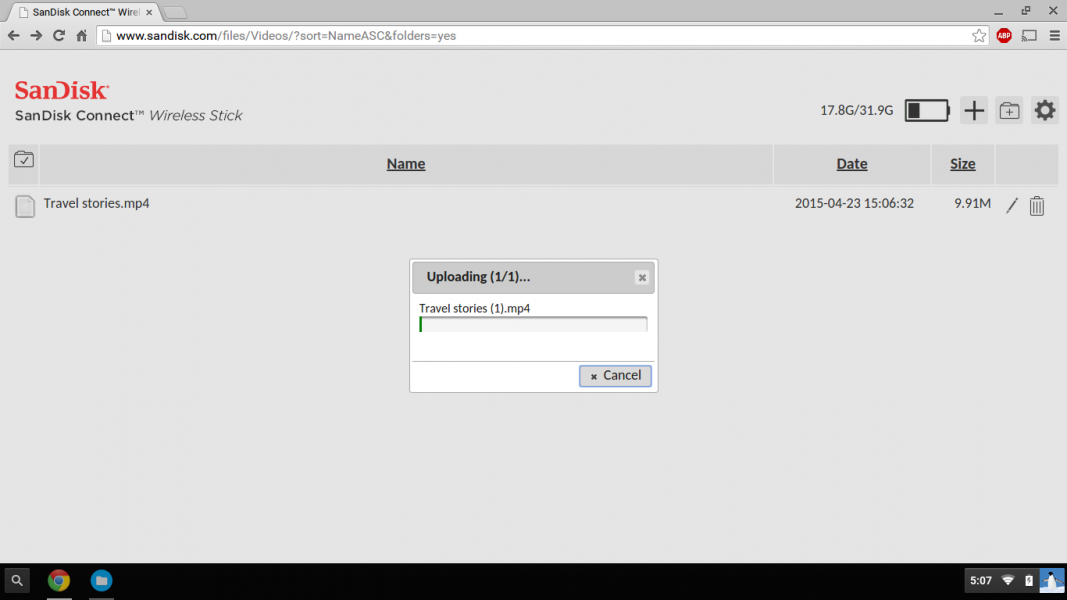
Having successfully done this, discovering that the download speed and upload speed were roughly equivalent, we tested its file destruction capabilities.
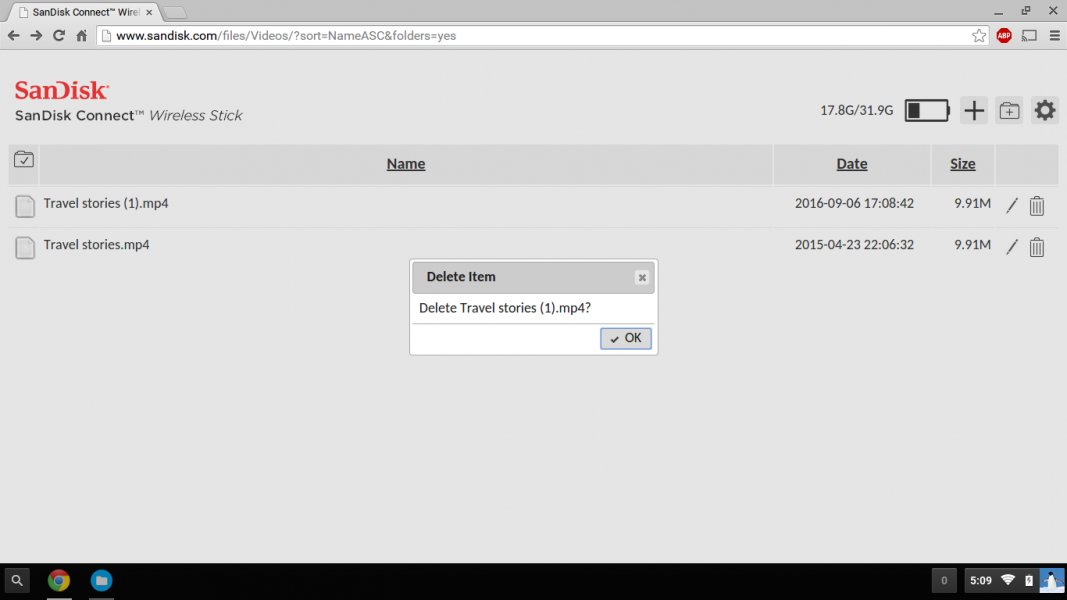
In a blink of an eye, 9.91 Mb were erased.
All in all, the Chromebook works just as well with SanDisk's Connect Wireless Stick as any other device we've tried. Note there is still a fundamental user experience issue where the user can't access the SanDisk's Connect Wireless Stick over the network when it is being used by the Chromebook through the USB port.
That being said, we would probably not connect to the SanDisk's Connect Wireless Stick using WI-FI unless we were out of USB ports or needed multiple people to access the stick at the same time. For the Chromebook which is very depending on Internet connectivity, it's inconvenient to access it using WI-FI since we need to disconnect the Internet connection and hop onto the stick's own network (plus the stick needs to be very close to the laptop itself).
View Full Article
Featured Products
 GTrusted
GTrusted




